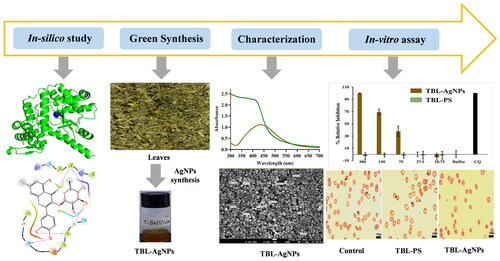Figures & data
Figure 1. Schematic representation of green mediated silver nanoparticles (AgNPs) synthesis using Terminalia bellirica leaves extract.

Figure 2. In-silico investigation (A) docking complex of silver (Ag) ion and selected target proteins, and (B) 2D interaction map of the selected drug targets with the plant’s leaf constituents. Showing hydrogen bonds and hydrophobic interactions with the binding site residues.
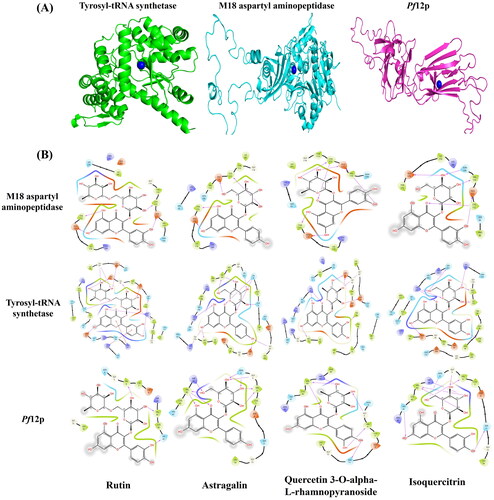
Figure 3. (A) Characterization of TBL-AgNPs using UV spectrophotometer and the peaks were observed at 427 nm, (B) DLS analysis of the TBL-AgNPs (176.4 nm), (C) zeta potential results of TBL-AgNPs (−9.24 mV) and (D) FTIR spectra of TBL-AgNPs.
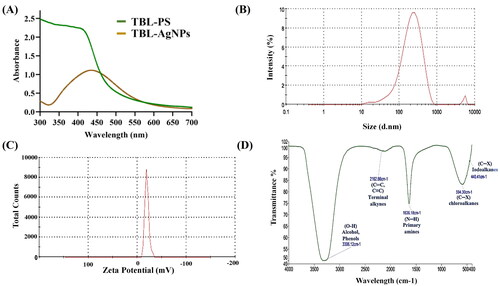
Figure 4. (A) Structural characterization of TBL-AgNPs using XRD and (B) Size measurement of the TBL-AgNPs (44.05 nm) using FESEM.
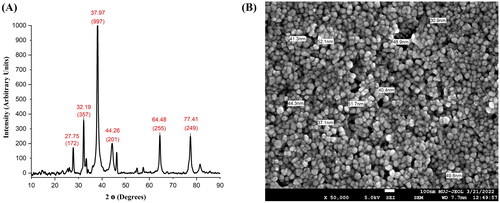
Figure 5. (A) Antimalarial activity of TBL-AgNPs in-vitro 3D7 strain. The percentage of parasite relative inhibition on pRBC was treated with an increasing dose (18.75–300 ng/mL) at 48 h of TBL-AgNPs, and (B) IC50 calculations of the TBL-AgNPs (IC50 = 94.70 ng/mL).

Figure 6. (A) Haemolysis assay on human pRBCs treated for 48 h at 37 °C with progressive doses of TBL-AgNPs and TBL-PS was found negligible, and (B) MTT assay cell viability counts on HEK293 cell lines. The TBL-AgNPs are not significantly affecting HEK239 at dosages of 150, 200, 250, 300, and 600 ng/mL.
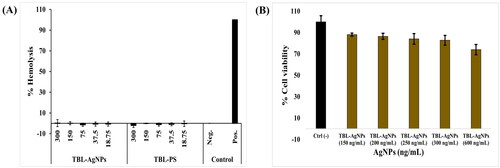
Figure 7. An aspect of culture showing with arrows parasite control at the ring stage. Culture was also used for all tested compounds. Aspect of culture after 48 h of incubation TBL-PS and TBL-AgNPs at 48 h of 300 ng/ml.
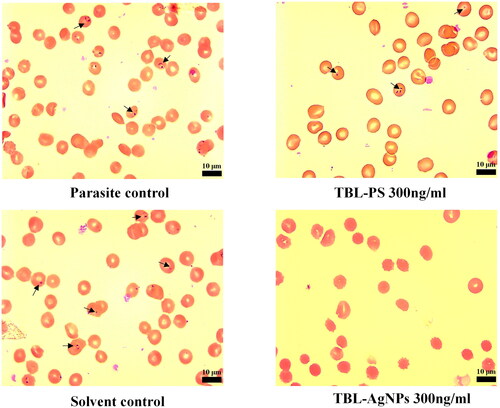
Table 1. Comparison the antimalarial activity of previous published literature with the current study result.
Data availability statement
The published article contains all the data that was created or examined during this study.

